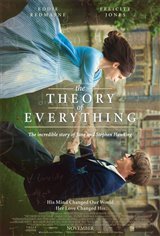Stephen Hawking
Stephen Hawking was just 21 when he was diagnosed with Amyotrophic Later Sclerosis (ALS), a neurodegenerative disorder that ultimately robs individuals of a sustainable life. The disease rapidly deteriorates muscle use and can severely affect speaking, breathing and swallowing. He was given two years to live and fell into a tragic depression. Jane Wilde was passionately in love with Stephen and though the two had only been dating a short while, rejuvenated his life when she agreed to marry him in 1965.
Stephen received his PhD degree in 1966, while he and Jane attempted to create an idealistic family life shortly after their marriage. Robert, their first child was born in 1967. Stephen was forced to the confines of a wheelchair by late 1969. However, Jane constantly motivated him to embrace his genius and fight past the regiments of the disease. They welcomed their second child, Lucy, in 1970. At this point in his career, Stephen was developing theories and laws, arguing properties of black holes, winning awards and teaching. As a result, Jane was forced to postpone her studies and commit to nursing Hawking and raising their children full time.
The seventies were a fruitful decade for Hawking, as he joined forces with fellow scientists to further develop his theories on black holes. By 1974, he disproved the idea that black holes were the vacuums of the universe, demonstrating that matter, in the form of radiation, can escape from them. His theory was dubbed “Hawking Radiation” after his discovery. In 1975, Stephen wrote his highly technical The Large Scale Structure of Space-Time.
Though his professional life was gaining steady acclaim, Stephen’s health was continuously deteriorating. His speech was slurred to the point that only those who knew him well could understand him. When his third child, Timothy, was born in 1979, Hawking concluded that he needed much more than awards to support his children in their adult life. As a result, he commenced work on the book A Brief History of Time.
In 1985 on a trip to Geneva for a CERN event, Stephen contracted pneumonia. Stephen was not expected to live and Jane was asked if she would like to have the plug pulled on her husband. She refused and a tracheotomy was used to save his life. As a result, Stephen lost what remained of his speech. Fulltime caretakers moved into the Hawking residence to give him around the clock treatment.
The medical setback halted further development on his book, as Stephen searched for a method to communicate. At first, he would use his eyebrows to answer simple questions, but he yearned for another method to elaborate his ideas. With the help of a computer programmer based in California, Stephen was able to communicate by selecting words on a computer screen with a clicker, which was then processed by a speech synthesizer. The invention was made in a time where Stephen had the use of his fingers. Later, he was forced to use a muscle in his cheek to navigate the clicker.
After years of frustration and encouragement to produce the book, A Brief History of Time was published in 1988 and went on to sell over 10 million copies. Stephen and his family became overnight celebrities and the success of the book was overwhelming for Jane, who would later cite the fame as a major source of stress in their marriage. The book was later followed by several more books, including The Universe in a Nutshell in 2001, A Briefer History of Time in 2005 and The Grand Design in 2010.
As Stephen was dazzled with awards, honors and prestigious prizes, their marriage went through a rollercoaster of events, all of which were splashed across the tabloids. Jane met musician/choirmaster Jonathan Hellyer-Jones in 1977, and he often helped Jane with Stephen’s care. In 1985 she offered him a room in their home and although a relationship developed between the two, Stephen didn’t object, because he didn’t think he was going to live very long and he felt the children would need someone to support them when he was gone.
However, as time went by, he began to get increasingly unhappy about Jane’s relationship with Jonathan. Although she vowed not to let the relationship break up the marriage, Stephen moved out in 1990 and into an apartment with one of his nurses, Elaine Mason.
Stephen’s actions took Jane by surprise. She’d been his caregiver and cheerleader for so many years that she felt like she’d lost her identity.
Stephen married Elaine in 1995, but throughout their marriage there were allegations of Elaine abusing and violently attacking her helpless husband, and although police were called to their home many times, Stephen has always denied the claims. They divorced in 2007.
Jane, who married Jonathan in 1996, wrote a memoir, Music to Move the Stars, which was published in 1999, but it received mostly negative feedback due to her honesty about her life with Stephen, calling him “the puppeteer” and “emperor.” Despite that, Jane called writing the book a cathartic experience. Following Stephen’s second divorce, he and Jane came to an understanding and are on friendlier terms. Her second memoir, Travelling to Infinity: My Life with Stephen was released in 2011 and is the basis for the film, The Theory of Everything, starring Eddie Redmayne and Felicity Jones. ~Nadira Chand
